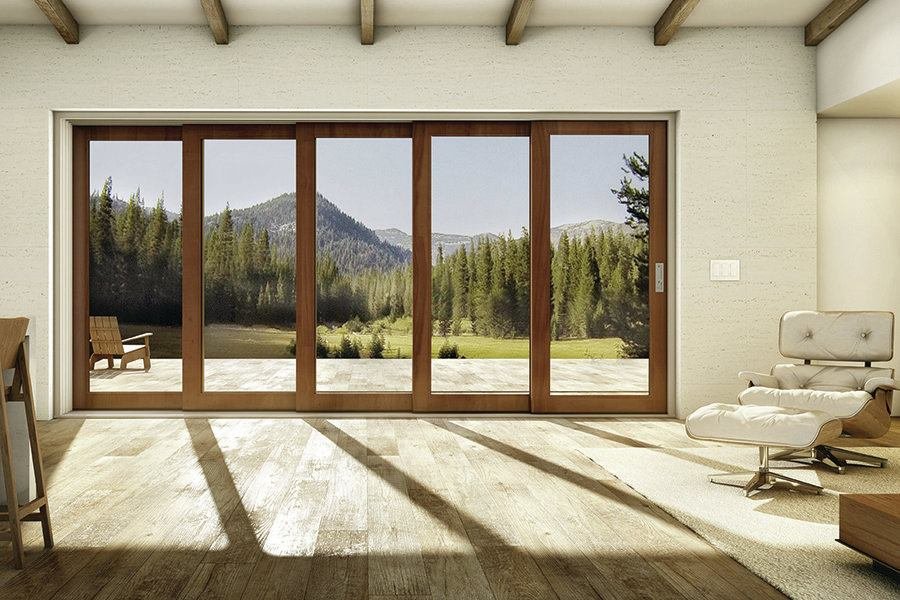The Timeless Charm of Southern Farmhouse Style
Taking cues from classic Southern architecture, like the famous front porch and focus on fresh air flow, these elements continue to impact how homes are built today.
While the 2023 Southern Living Idea House may not look like a typical 19th-century Southern farmhouse, it does pay homage to this beloved American style through its design choices.
In this house, you can see the timeless principles of Southern architecture in the large porches, good ventilation, and high ceilings. These features are just a few reasons why this style remains popular.
Today, architects, builders, and homeowners appreciate these farmhouse qualities for their ability to connect with nature, bring in natural light, and create a seamless indoor-outdoor living experience. What was once necessary for comfort in a time before air conditioning is now valued for how it enhances a home's connection to the environment, liveliness, and coziness.
We spoke with residential designers Bill Holloway and Luke Sippel from Lake + Land Studio to learn about the key characteristics of Southern farmhouse-style homes.
Porches
Porches are a beloved aspect of Southern architecture, as important as enjoying a cold glass of sweet tea on a sunny day. Whether it's a wide wrap-around porch, a cozy spot for morning coffee, or a peaceful retreat in the afternoon, a Southern farmhouse wouldn't be complete without a porch.
In the Southern Living Idea House, the porch serves as a seamless link between the inside and outside, thanks to a large Slide door.
"The expansive door leading out to the porch feels like an extension of our home," Holloway explained.
The Southern tradition of expanding living spaces into the outdoors offers both practicality and comfort. Porches originated from the need to stay cool on hot July days before air conditioning was common. They provide a spot to kick off dirty shoes, seek shade from the sun, take shelter during sudden rain showers, and relax while waiting for a cool breeze.
"Having large porches is a key feature for farmhouses," Sippel emphasized.
Cross Ventilation
After porches, another essential feature of a Southern farmhouse is aligning the windows at the front of the house with those at the back. Sippel emphasized the significance of this design approach:
"In the past, especially during the hot summer months when farming activities were at their peak, people would come home looking for relief and comfort. They wanted to cool off," he explained. "By strategically placing windows and doors opposite each other, you can create excellent cross ventilation."
Southern breezes have a special allure for a reason, and if you feel a refreshing airflow indoors, it's likely thanks to the thoughtful design of cross ventilation.
High Ceilings
Let's remember a basic science fact: warm air goes up. The builders of old Southern farmhouses knew this well. They used different methods to keep their homes cool, and one smart choice was to have high ceilings.
"Tall ceilings are a classic feature of Southern farmhouses, especially those built before modern heating and cooling systems were around," Holloway explained. "The high ceilings were deliberate to allow hot air to rise. It's a perfect example of the traditional design of Southern farmhouses."
As modern heating and cooling systems like central air conditioning became common, ceilings were lowered for energy efficiency reasons: lower ceilings use less energy for heating and cooling.
"Once central air became popular, ceilings were usually lowered to around 8 feet," Holloway pointed out. "But in a traditional farmhouse, the ceilings would have been much higher."
Exposed Rafter Tails
Known for being a key feature of Craftsman-style homes, exposed rafter tails are also found in Southern farmhouses. (If you're not sure what a "rafter tail" is, just think of the visible beams under the roof.) This design element was more about saving money than achieving a specific look for traditional builders. Closing off the soffits would have required more materials and labor. By leaving the rafter tails exposed, they could avoid those extra costs.
"Exposed rafter tails are a common feature," Sippel explained. "In my opinion, they play a big role in creating a cozy cottage or farmhouse style. It's a unique detail that really captures that style."




